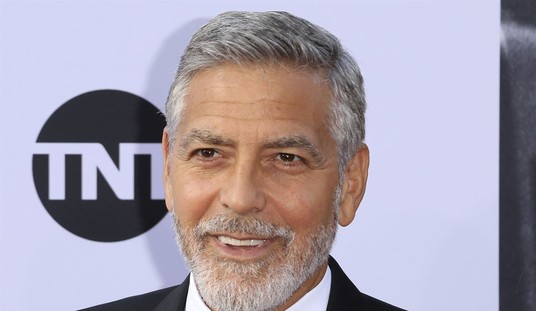It was only a few months ago that two New York City police officers were assassinated in the wake of Mayor Bill de Blasio’s decision to accuse the police force he led of engaging in racially biased law enforcement tactics. A modest work slowdown in response to de Blasio’s provocation prompted the hopelessly myopic New York Times editorial board to accuse the NYPD of a “snarling sense of victimhood” because they had the temerity to object to being called racist and targeted for execution by those whom the mayor had agitated.
But the conspicuous killings of police officers in the line of duty have not abated. In fact, they feel like they are on the rise.
In early May, another NYPD officer, Brian Moore, was shot in the head while patrolling Queens Village in plain clothes. Moore is the fifth police officer to be shot in the city in as many months. As Jazz reported, two Mississippi officers were shot and killed over the weekend by a pair of Hattiesburg brothers. “This is one more tragic reminder of the dangerous job that police officers do in the cause of serving and protecting the public, holding back the tide of chaos,” he wrote.
If it seems to you like police deaths are on the rise, it’s not your imagination.
According to recently released FBI statistics, flagged by Mashable news editor Brian Ries, the murder of law enforcement officers in the line of duty increased by 89 percent in 2014 from the prior year.
Preliminary statistics released today by the FBI show that 51 law enforcement officers were feloniously killed in the line of duty in 2014. This is an increase of almost 89 percent when compared to the 27 officers killed in 2013. (Note: From 1980–2014, an average of 64 law enforcement officers have been feloniously killed per year. The 2013 total, 27, was the lowest during this 35-year period.) By region, 17 officers died as a result of criminal acts that occurred in the South, 14 officers in the West, eight officers in the Midwest, eight in the Northeast, and four in Puerto Rico.
By circumstance, 11 officers died from injuries inflicted as a result of answering disturbance calls (one of which was a domestic disturbance). Ten officers were conducting traffic pursuits or stops, eight were killed as a result of ambushes (six due to entrapment/premeditated situations and two during unprovoked attacks), and six officers were investigating suspicious persons or circumstances. Five officers sustained fatal injuries while they were performing investigative activities, four while they were engaged in tactical situations, three officers were handling persons with mental illness, and one officer was slain during a drug-related matter. Three officers were killed while attempting other arrests.
A review of the circumstances indicates that there has not been a sharp rise in the number of police deaths due to targeted attacks, but perception is everything. There is a prevalent belief that big city mayors like de Blasio have opted to sate an angry mob of anti-police demonstrators by antagonizing cops.
Those who see antagonism towards police in the mayor’s words can cite his latest budget as proof of anti-law enforcement antipathy in Gracie Mansion. In the New York City mayor’s latest budget proposal, de Blasio has rebuffed his own police commissioner and gutted funds for new officer recruitment. And the NYPD needs to recruit new members now more than ever. The number of people who applied to become police officers in the Big Apple declined by nearly 18 percent last year, “a drop that experts said is connected to intense criticism of officers after several fatal confrontations with unarmed black men in New York and nationwide,” AM New York reported.
A total of 12,286 people signed up for the test in 2014, down from 14,953 in 2013, according to the Department of Citywide Administrative Services. (The test was not offered for two weeks in November of last year.) And the number has been dropping since the city started keeping computerized records in 1996.
It isn’t merely in New York City that anti-law enforcement antagonism appears to be spiking. Following riots in Baltimore after a suspect died suspiciously in Charm City police custody, Baltimore Prosecutor Marilyn Mosby became a hero to those suspicious of law enforcement when she charged six officers involved in that arrest with a variety of crimes including manslaughter and murder. Mosby’s dispassionate professionalism was called into question this weekend when she appeared on stage with the artist Prince at a rally demanding the officers involved in the death of Freddie Gray face justice.
Regardless of whether or not it is justified, there is a perception that the always thankless job of community policing is growing ever more dangerous as elected officials have begun to lend credence to the claims made by community activists who allege serial police misconduct and brutality. This set of circumstances will inevitably lead to more dangerous communities, more threats to law enforcement, and more distrust between the police, the people they serve, and the elected officials to whom they report.








Join the conversation as a VIP Member